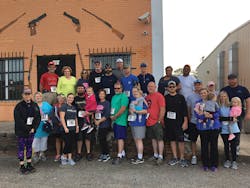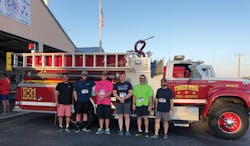A Healthy Organization Has a Healthy Workforce
Work-related stress is the number-one workplace health issue and a major occupational risk, ranking above physical inactivity and obesity, according to the Centers for Disease Control. Full-time workers in the United States who are overweight or obese and have other chronic health problems miss about 450 million more days of work than healthy workers, costing more than US$153 billion a year in lost productivity.
By encouraging their employees to have a healthier lifestyle, companies can reduce their stress, risks for obesity and possibility for fatigue. They can also reduce workers’ chance for heart disease and strokes, which are among the most widespread and costly health problems facing our nation today. In fact, treatment of these diseases accounts for about $1 of every $6 spent on U.S. health care.
In contrast, focusing on workers’ health can increase profitability and productivity and lower health costs. For example, Southwest Tennessee Electric Membership Corp. (STEMC), a consumer-owned, non-profit electric distribution cooperative in Western Tennessee, believes a healthy organization includes a healthy workforce. Here are some of the ways STEMC has encouraged its workers to live a healthy lifestyle.
- Give extra vacation time for staying fit. Living a healthy lifestyle has many side benefits. Healthy employees are more productive, happier, use less sick leave and, therefore, are at work more often. Healthy employees feel better about themselves and are more confident.
- Last year, Kevin Murphy, president and CEO of STEMC, challenged employees to beat him in a local 5 kilometer race to earn eight hours of additional vacation time. Murphy even agreed to push an employee who had been in a recent automobile accident in a wheelchair during the race. STEMC had 13 employees participate in 2017 in what became known as “Team Dalton vs Team STEMC.”
- Get the spouses involved. This year, Murphy offered eight hours of additional vacation time to employees if they beat Michael Russell, the vice president of operations. Also this year, if their spouse completed a 3.1-mile course, they would gain another four hours for a total of 12 hours of additional vacation time. As another gesture to increase participation, the opportunity was expanded to three different races—one on the west side of the territory, one in the central region and one on the east side of the territory. As a result, the participation increased to one-third of the employees and 26 spouses. STEMC hopes the 5K races encourages employees to get up, get out, and run, walk or jog. It doesn’t matter as long as they are moving and working toward a healthier lifestyle.
- Start an activity tracker program. In July 2016, STEMC started reimbursing employees $100 for the purchase of an activity tracker, a wireless-enabled technology device that measures number of steps taken, heart rate, quality of sleep, steps climbed and other personal fitness metrics. Once the employees purchase the device, they can join the STEMC group through an app that allows them to compete against their fellow employees in the number of steps they make each month. Of the 48 employees who have purchased activity trackers, 30 of them participate in the tracking group through the app.
- Award prizes. As a part of STEMC’s safety and health program, the cooperative gives out Safety Jackpot cards to allow employees to win cash and prizes. For every 100,000 steps each month, an employee gets two Safety Jackpot cards.
- Create an exclusive club. The American Heart Association recommends that Americans get at least 10,000 steps per day. At STEMC, however, several employees are members of the 500K Club, which means they obtained over 500,000 steps in one month or 16,000 to 17,000 steps per day.
STEMC encourages employees to be healthy and live a healthy lifestyle so they can live long lives, continue to provide financially for themselves and their families and serve the 50,000 members by being productive and efficient for many years to come.
About the Author
Michael Ray Russell
Michael Ray Russell ([email protected]) is vice president of operations at STEMC, where he has worked for five years. Russell retired as manager of electric substation engineering and operations from Memphis Light, Gas and Water (MLGW) after 25 years of service. He has his PE license in the State of Tennessee, obtained his MBA in Finance from Christian Brother’s University and his bachelor of science in electrical engineering from the University of Memphis.
Brian Holland
Brian Holland ([email protected]) is the safety coordinator at STEMC, where he has been employed for the past three years. He retired as general supervisor of system lighting and maintenance from MLGW after 25 years of service. He is a certified utility safety professional, certified safety coordinator through TVPPA and is currently seeking his certification as a certified loss control professional through the National Rural Electric Cooperative Association.

